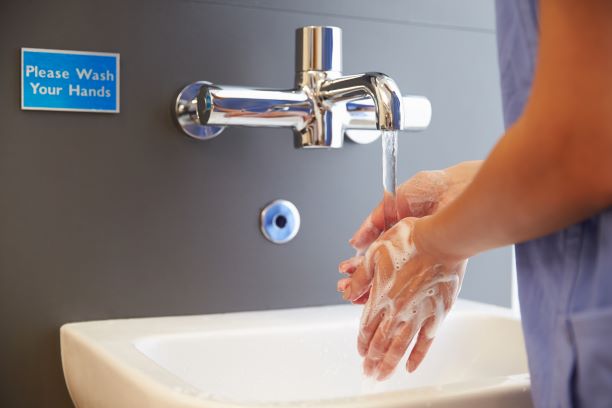
How Healthcare Professionals Win the Battle over Dry, Sensitive Hands With A Shielding Lotion
It’s a problem for any medical profession: dry, rough, and uncomfortable hands due to continual hand washing, antibacterial soaps, and the harsh realities of daily living, robbing moisture from skin. Even in emergency situations, latex gloves, while offering protection from body fluids and disease, can also contribute to future skin problems – including contact dermatitis and serious allergic reactions – especially with prolonged use, without a proper dry skin treatment.
But the problems don’t stop there. Though less than one percent of the general population is allergic to latex, the percentage among healthcare workers is much higher – between 17 and 25 percent, according to the national Centers for Disease Control and Prevention (CDC). Experts believe that constant latex exposure from gloves used during emergencies and other sources puts healthcare professionals such as nurses, dentists, and lab personnel at increased risk of latex sensitivity. The reason is that petroleum based lotions weaken the ability to protect those wearing latex gloves and increase permeability. Increased permeability means higher risk for skin infections such as contact dermatitis and serious allergic reactions to whatever the medical professional may be using on his or her hands as an antiseptic.
“Latex gloves are hard on the hands even for those not overly sensitive to the material,” says Jasmin Elliott, a licensed RN, who has worked in hospital and emergency outpatient clinic environments in Southern California. “But wearing them is inevitable as a medical professional. Constant hand washing takes its toll on your hands too, when washing before and after each patient interaction with several patients each hour.”
To back this up, according to a study by the National Institute for Occupational Safety and Health, the use of chemical irritants and their direct contact with the skin account for 15 to 20 percent of all occupational diseases and incur costs of more than $1 billion annually.
So what is the best moisturizer for dry skin? And how does one maintain emergency preparedness where their own skin can be at risk?
Fortunately, a new type of “shielding” lotion is helping to provide a solution, by acting as a barrier to unwanted skin irritants and conserving the body’s own moisture. Unlike traditional moisturizers that add artificial moisture to the skin’s surface where it can wash away or rub off, shielding lotions instead bond with the outer layer of skin. This keeps moisture-robbing irritants out while helping to retain the skin’s natural moisture. The result: better hydrated skin. One application typically lasts for four hours or more and comes off naturally with exfoliated skin cells.
“The product has put elasticity back in my hands,” says Elliott. “They’re not cracked or sore anymore. I don’t have to reapply moisturizer between patients. When I wash, it’s still there protecting my hands from anti-bacterial soaps, cleansers, even the latex gloves I wear. It’s non-greasy, unscented, and absorbs quickly.”
Elliot lauds the product’s restorative powers. “It provides a protective barrier not only to drying or irritating substances, but also to germs,” she says. “It helped heal my cracked fingertips and even a cut on my finger, which ‘disappeared’ after just two days.”
Shielding lotions such as Gloves In A Bottle are available in the US at over 9,500 pharmacies and over 3,000 specialty shops. For more info call 800-600-1881, or visit www.glovesinabottle.com
